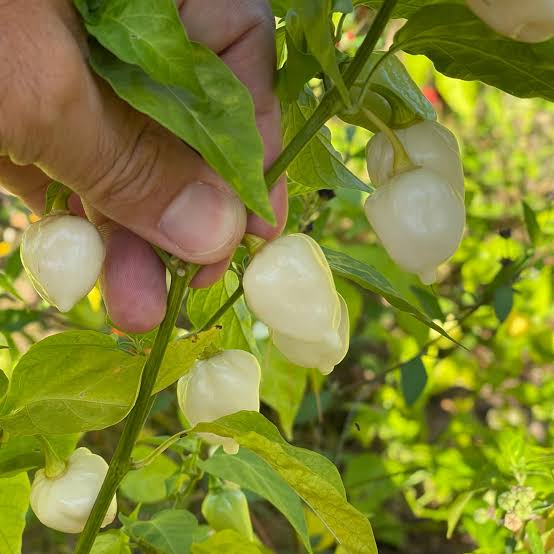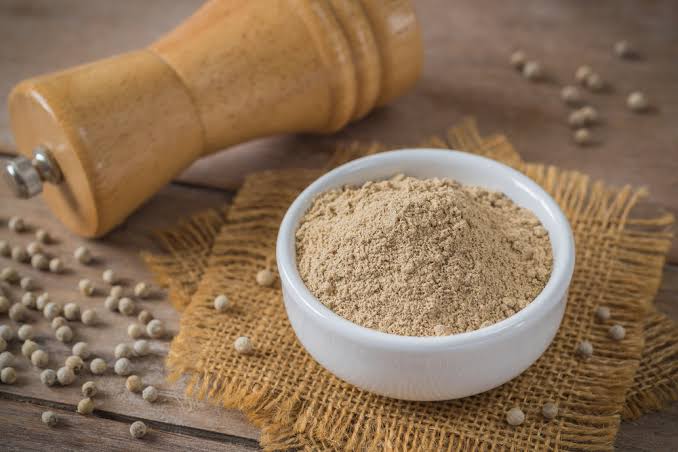White pepper is a special kind of spice. It comes from the same plant as black pepper, but it’s a bit different. White pepper is made from the inner part of the pepper fruit, while black pepper uses the outer part. This gives white pepper its unique flavor and color.
Making white pepper is a bit tricky. First, ripe pepper berries are picked from the pepper plant. Then, they are soaked in water for about a week. This makes the outer layer of the berry soft. After that, the outer layer is removed, leaving only the inner part. This inner part is what we call white pepper.
White pepper has a milder taste compared to black pepper. It’s not as spicy, but it still adds a nice peppery flavor to food. Some people say white pepper has a slightly earthy and musty smell, while others think it’s a bit woody.
White pepper is used in many dishes around the world. It’s common in Chinese and Thai cuisine. You can sprinkle it on soups, noodles, and stir-fried dishes. Some people even use it in mashed potatoes. It blends well with creamy dishes and lighter-colored foods.
White pepper, like black pepper, may have some health benefits. It contains a compound called piperine, which may help with digestion and has antioxidant properties. Some people believe it can also help with pain relief, but more research is needed.
To keep white pepper fresh, store it in an airtight container away from light and heat. This will help preserve its flavor and aroma. Ground white pepper can lose its potency faster than whole white peppercorns.
Additionally, white pepper is a unique spice with a milder flavor compared to black pepper. It’s made from the inner part of ripe pepper berries and is used in various cuisines worldwide. Whether you enjoy it in soups, stir-fries, or mashed potatoes, white pepper adds a distinctive taste to your dishes. Plus, it might even have some health benefits. So, the next time you’re cooking, consider reaching for the white pepper to spice up your meal.
Read Also: Puppies Grooming and Complete Care Guide
How to Grow the White Pepper

White pepper is a tasty spice that you can grow right in your own garden. It comes from the same plant as black pepper but is processed differently to get its unique flavor. Growing white pepper can be a fun and rewarding experience. Here’s a simple guide on how to do it:
1. Choosing the Right Climate: White pepper plants thrive in warm, tropical climates. They need plenty of sunlight and rain to grow well. If you live in a region with cold winters, consider growing white pepper in a greenhouse or as a potted plant that you can bring indoors when it gets chilly.
2. Getting the Right Soil: White pepper plants like well-draining soil that’s rich in organic matter. You can improve your soil by adding compost or well-rotted manure. Make sure the soil’s pH level is around 5.5 to 7, which is slightly acidic to neutral.
3. Selecting Pepper Seeds: You can start your white pepper journey by buying seeds from a reputable source or collecting them from mature pepper berries. To collect seeds, let some pepper berries ripen on the vine, then harvest them when they turn red. Remove the outer flesh to get to the seeds inside.
4. Planting the Seeds: Plant your white pepper seeds about 1/2 inch deep in the soil. Keep the soil consistently moist but not waterlogged. You can plant multiple seeds in rows or in separate pots if you’re growing them indoors.
5. Sunlight: White pepper plants love sunlight. They need at least 6 to 8 hours of direct sunlight daily.
6. Watering: Keep the soil consistently moist but not soggy. Water when the top inch of soil feels dry.
7. Support: White pepper plants often need support as they grow. Use stakes or trellises to help them climb and stay upright.
8. Pruning: Trim any dead or diseased branches to keep your plants healthy.
9. Fertilizing: Apply a balanced, slow-release fertilizer every few weeks during the growing season to provide essential nutrients.
10. Harvesting White Pepper: White pepper comes from the inner part of ripe pepper berries. To harvest, wait until the berries turn red. Then, soak them in water for about a week to soften the outer layer. After soaking, gently rub off the outer skin to reveal the white pepper inside.
11. Drying and Storing: Dry the white pepper in the sun or use a dehydrator until it’s crispy. Store it in an airtight container in a cool, dry place away from direct sunlight. Properly dried white pepper can last for a long time without losing its flavor.
Now that you’ve grown and harvested your own white pepper, you can use it to add delicious flavor to your favorite dishes. It’s perfect for seasoning soups, sauces, and a variety of savory meals. Growing white pepper can be a delightful hobby that brings a taste of the tropics to your garden and kitchen.
15 Health Benefits of White Pepper

While white pepper may not be as well-studied as some other spices, it does offer certain potential health benefits. Here are 15 health benefits associated with white pepper:
1. Digestive Aid: White pepper contains piperine, which may help stimulate digestive enzymes and improve digestion.
2. Anti-Inflammatory: Piperine may have anti-inflammatory properties, potentially reducing inflammation in the body.
3. Antioxidant: White pepper contains antioxidants that can help combat free radicals, protecting cells from damage.
4. Weight Management: Some studies suggest that piperine may aid in weight management by increasing metabolism and reducing fat accumulation.
5. Pain Relief: Piperine may have mild pain-relieving properties and could help alleviate minor aches and pains.
6. Respiratory Health: White pepper’s warming properties may provide relief from respiratory issues, such as coughs and congestion.
7. Skin Health: Antioxidants in white pepper may promote healthier skin by fighting signs of aging and supporting collagen production.
8. Anti-Bacterial: White pepper has been used traditionally to help combat bacteria and reduce the risk of infections.
9. Blood Pressure: Some studies suggest that white pepper may help regulate blood pressure, contributing to cardiovascular health.
10. Antispasmodic: It may have antispasmodic properties that can help reduce muscle cramps and spasms.
11. Cognitive Health: Piperine might have a positive impact on cognitive function and memory.
12. Anticancer Potential: While research is ongoing, some studies suggest that piperine may have potential anticancer effects.
13. Gastrointestinal Health: White pepper may help soothe gastrointestinal discomfort and promote a healthy gut.
14. Immune Support: Antioxidants in white pepper can support the immune system by neutralizing harmful free radicals.
15. Nutrient Absorption: Piperine may enhance the absorption of certain nutrients, such as curcumin from turmeric, when consumed together.
It’s important to note that while white pepper may offer these potential benefits, individual responses can vary. It should be used in moderation as a spice in cooking and not as a substitute for medical treatment. If you have specific health concerns, it’s always a good idea to consult with a healthcare professional for personalized advice.
Read Also: German Shepherd Dogs Description and Complete Care Guide
12 Uses of White Pepper

White pepper is a versatile spice that can be used in a variety of culinary applications. Here are some common uses of white pepper in cooking:
1. Seasoning: White pepper is a popular seasoning for a wide range of dishes, from soups and sauces to vegetables and meats. It adds a mild, peppery flavor without the speckled appearance of black pepper.
2. Soups and Stews: White pepper is often used to season soups, broths, and stews, providing a subtle heat and flavor enhancement. It’s particularly common in creamy soups like potato or clam chowder.
3. Sauces: White pepper is a key ingredient in many sauces, including béchamel and velouté sauces. It helps to maintain a white or pale color in these sauces, making it ideal for dishes where aesthetics are important.
4. Stir-Fries: In Asian cuisine, white pepper is frequently used in stir-fried dishes. It complements the flavors of ingredients like chicken, pork, and vegetables.
5. Marinades: White pepper can be added to marinades for meats and poultry, infusing them with a subtle peppery flavor. It pairs well with garlic, ginger, and soy sauce in marinades.
6. Baked Goods: White pepper can be a surprising but delightful addition to some baked goods, such as gingerbread cookies or fruitcakes, adding a subtle warmth to the sweetness.
7. Eggs: Sprinkle a pinch of white pepper on scrambled eggs or omelets to give them a mild spicy kick.
8. Mashed Potatoes: White pepper is a classic choice for seasoning mashed potatoes, as it doesn’t disrupt the creamy texture and maintains a uniform color.
9. Seafood: It pairs well with seafood, especially in dishes like crab cakes or creamy seafood pasta.
10. Seasoning Blends: White pepper is often included in seasoning blends, such as Chinese five-spice powder and some curry blends, where it contributes to the overall flavor profile.
11. Pickling: White pepper can be used in pickling brines to impart a gentle spiciness to pickled vegetables.
12. Infused Oils and Vinegars: White pepper can be added to homemade infused oils and vinegars for a unique flavor twist.
Remember that white pepper has a milder flavor compared to black pepper, so you may need to use a bit more to achieve the desired level of spiciness. Additionally, its fine texture makes it suitable for dishes where a smooth appearance is preferred. Use it judiciously to enhance the taste of your dishes without overpowering them.
